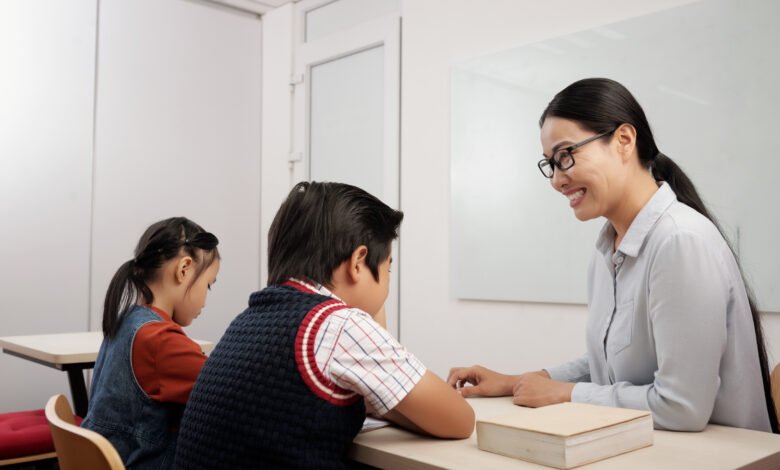Ace Your Kindergarten Teacher Interview: Essential Questions and Answers

Landing a job as a kindergarten teacher vacancy requires more than just submitting your resume and cover letter. The interview is a critical step in the hiring process, allowing you to demonstrate your skills, experience, and passion for early childhood education. To help you prepare, we’ve compiled a list of essential interview questions and provided example answers to ensure you make a strong impression.
Understanding the Interview Process
Before diving into specific questions, it’s important to understand the structure of a typical kindergarten teacher interview. You can expect questions that assess your teaching philosophy, classroom management skills, and ability to connect with young children and their parents. Demonstrating enthusiasm, patience, and a deep understanding of early childhood development will be key to acing the interview.
Common Interview Questions and Sample Answers
1. Tell us about yourself and your background in early childhood education.
Sample Answer:
“I have a Bachelor’s degree in Early Childhood Education from [University Name], and I have been working as a kindergarten teacher for the past five years. My passion for teaching young children began during my college internship, where I realized the profound impact that early education can have on a child’s development. Over the years, I have developed a teaching style that emphasizes hands-on learning, creativity, and emotional support. I am committed to creating a nurturing and stimulating environment where children feel safe and excited to learn.”
2. What inspired you to become a kindergarten teacher?
Sample Answer:
“My inspiration to become a kindergarten teacher came from a volunteer experience I had in high school, working at a local daycare center. I was amazed at how quickly young children could learn and how enthusiastic they were about exploring new concepts. This experience made me realize the importance of providing a strong educational foundation during the early years. I wanted to be part of that journey and help shape the future of young learners.”
3. How do you handle classroom management and discipline?
Sample Answer:
“I believe that effective classroom management starts with creating a positive and inclusive classroom environment. I set clear expectations and rules from the beginning and involve the children in the process so they feel a sense of ownership. I use positive reinforcement to encourage good behavior and address any issues promptly and fairly. If a child exhibits challenging behavior, I take the time to understand the underlying cause and work with them to find a solution. Building strong relationships with the children is key to maintaining a respectful and orderly classroom.”

4. Can you describe a successful lesson plan you have implemented?
Sample Answer:
“One of my most successful lesson plans involved a week-long project on ‘The Life Cycle of a Butterfly.’ We started with a storybook about butterflies, followed by a hands-on activity where the children created their own butterfly life cycle models using crafts. We then observed live caterpillars in the classroom, documenting their transformation into butterflies. The children were deeply engaged and excited about the project, and it reinforced their understanding through multiple learning modalities—visual, auditory, and kinesthetic. It was a great way to integrate science, literacy, and art into a cohesive learning experience.”
5. How do you involve parents in their child’s education?
Sample Answer:
“I believe that strong parent-teacher communication is essential for a child’s success. I regularly update parents through newsletters, emails, and a classroom blog that highlights our activities and upcoming events. I also encourage parents to participate in classroom activities and volunteer for special projects. During parent-teacher conferences, I provide detailed progress reports and work together with parents to set goals for their child’s development. By fostering a collaborative relationship, we can ensure that the child receives consistent support both at home and in school.”
6. How do you adapt your teaching methods to meet the needs of diverse learners?
Sample Answer:
“Every child learns differently, so I use a variety of teaching methods to cater to diverse learning styles. For example, I incorporate visual aids, hands-on activities, and interactive storytelling to engage all students. For children who need extra support, I provide differentiated instruction and small group activities. I also make sure to create an inclusive classroom environment that celebrates diversity and encourages all children to share their unique perspectives and experiences. By being flexible and responsive to each child’s needs, I can help them achieve their full potential.”
7. What strategies do you use to promote social and emotional development in young children?
Sample Answer:
“Social and emotional development is a critical part of early childhood education. I use a variety of strategies to promote these skills, such as role-playing activities, cooperative games, and group discussions about emotions and social situations. I also model positive behaviors and provide opportunities for children to practice empathy and conflict resolution. By creating a supportive classroom environment, I help children develop the social and emotional skills they need to succeed both academically and personally.

Additional Tips for Success
Research the School
Before your interview, take the time to learn about the school or institution where you are applying. Understand their educational philosophy, programs, and community involvement. This knowledge will allow you to tailor your answers to align with the school’s values and demonstrate your genuine interest in becoming a part of their team.
Practice Makes Perfect
Practice answering the interview questions out loud with a friend or family member. This will help you articulate your thoughts clearly and confidently. Additionally, it can be beneficial to record yourself and review the footage to identify areas where you can improve.
Prepare Your Questions
Interviews are a two-way street. Prepare a list of questions to ask the interviewer about the school, their expectations, and the support provided to teachers. This shows that you are proactive and seriously considering how you can contribute to their institution.
Dress Professionally
First impressions matter. Dress in professional attire that reflects your respect for the interview process and the importance of the position you are applying for. A neat and professional appearance can boost your confidence and leave a positive impression on your interviewers.
Follow-Up
After the interview, send a thank-you email to the interview panel. Express your gratitude for the opportunity to interview and reiterate your enthusiasm for the position. This small gesture can set you apart from other candidates and demonstrate your professionalism.
Conclusion
Becoming a kindergarten teacher is a noble and fulfilling career choice that requires a unique blend of skills, patience, and passion. By preparing thoroughly for your interview, understanding the essential questions, and providing thoughtful answers, you can showcase your abilities and increase your chances of securing the job. Remember, every interaction during the interview process is an opportunity to demonstrate why you are the best candidate for the position. Good luck!

